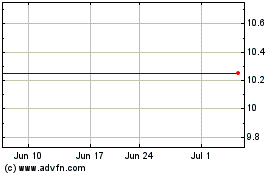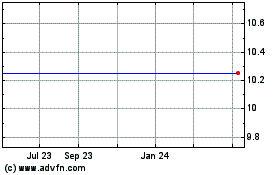Thomas Stemberg, Staples' Co-Founder, Dies at 66
October 23 2015 - 3:20PM
Dow Jones News
Thomas Stemberg's first big break came when he lost his job in
the grocery store business, a setback that led him to develop one
of the country's first specialized superstores years before they
dotted the retail landscape.
Mr. Stemberg, the only son of Austrian immigrants, had climbed
the ranks of the cutthroat New England grocery business by pushing
then-new concepts like generic store-brand food. But he was no
stranger to corporate infighting and left the industry in 1985
after an argument with bosses got him fired.
The early dismissal led Mr. Stemberg to start Staples Inc., a
concept he grew from a single location off a turnpike in Boston in
1986 into an international chain with billions of dollars in annual
sales.
"He didn't play well with other children," said former
Massachusetts Gov. Mitt Romney, an early Staples investor. Still,
his former employers acknowledged the young executive "was
brilliant and he was driven."
Mr. Stemberg died Friday at his home in Chestnut Hill, Mass.,
after a two-year fight with gastric cancer. He was 66.
The combative retail executive often said he hatched the idea
for Staples after driving around the Boston area searching in vain
for printer ribbon on the Fourth of July weekend, when local
stationary shops were closed.
"He understood those mom-and-pop stores could probably be fine
just from 9 to 5" by charging huge markups, said Larry DiCara, a
longtime friend and partner at the law firm Nixon Peabody LLP.
Mr. Stemberg said customers would flock to an outlet with more
convenient hours and cheaper prices. A bigger store, he reasoned,
could squeeze better deals out of wholesalers.
The idea won over Leo Kahn, a former nemesis in the grocery
industry who had bonded with his younger rival over Harvard
basketball games. The two teamed up and pitched the plan to
investors. Mr. Kahn gave the startup credibility in the financial
markets while Mr. Stemberg worked on the store's strategy and
day-to-day operations. Mr. Kahn died in 2011.
When most shopping was still done in malls and on Main Street,
Staples' approach to pens, pads and printer ink helped usher in a
new era of big-box stores set up to squeeze the competition with
more selection and lower expenses. The chain eventually grew into
the world's leading office supplier with more than $22 billion in
sales in its last fiscal year.
A stickler for efficiency, Mr. Stemberg was seen stocking some
of the first store's shelves the day it opened and would often
enlist his children to scout out competitors' stores in the
company's early days. "We'd be standing outside counting how many
people were coming in," said Rylan Hamilton, his adopted son.
Mr. Stemberg later became a trustee at the Boston Symphony
Orchestra and created two annual scholarships for incoming Harvard
University students who like him had lost a parent. After his
father died when he was 11, Mr. Stemberg moved with his mother to
Vienna. He returned to the U.S. because he was accepted to Harvard,
where he also earned an M.B.A.
Mr. Stemberg kept running Staples as it opened more stores,
built its own distribution centers and launched its initial public
offering in 1989. The company became a windfall for its founders,
including Mr. Romney's Bain Capital. Mr. Stemberg stepped down as
chief executive in 2002 and stayed on as executive chairman until
2005.
After leaving Staples, he also helped convince Mr. Romney during
his early days as Massachusetts governor to push for universal
health care in the state, arguing the cost of treating uninsured
workers was burdening society. The laws eventually passed in
Massachusetts became the model for the federal Affordable Care
Act.
"I don't like exactly the way Obamacare was structured, but it
copied a lot of what we did in Massachusetts," Mr. Romney said.
"Had Tom not put that in my mind," he added, many more people
wouldn't have health care today.
After Staples, Mr. Stemberg joined venture-capital firm Highland
Capital Partners and was an early investor in apparel store
Lululemon Athletica Inc. He is survived by his third wife,
Katherine, and by six sons, three stepdaughters and three
grandchildren.
The simple economics of Staples' lower expenses and broader
selection eventually swept away most independent stationers in much
the same way supermarkets had trumped independent grocers decades
earlier.
Staples' in-store sales started to fall behind other retailers
during the 2008 financial crisis and have yet to recover. In
February, Staples revealed plans to buy rival Office Depot Inc. for
$6.3 billion, a response to the office supply market's changing
economics.
The two chains first tried to merge in 1996—with Mr. Stemberg at
the helm of Staples—but were rebuffed by the Federal Trade
Commission, which warned the deal could raise prices. The new
takeover is still under review in the U.S., Canada and Europe.
Write to Drew FitzGerald at andrew.fitzgerald@wsj.com
Subscribe to WSJ: http://online.wsj.com?mod=djnwires
(END) Dow Jones Newswires
October 23, 2015 15:05 ET (19:05 GMT)
Copyright (c) 2015 Dow Jones & Company, Inc.
Staples, Inc. (NASDAQ:SPLS)
Historical Stock Chart
From Mar 2024 to Apr 2024

Staples, Inc. (NASDAQ:SPLS)
Historical Stock Chart
From Apr 2023 to Apr 2024
